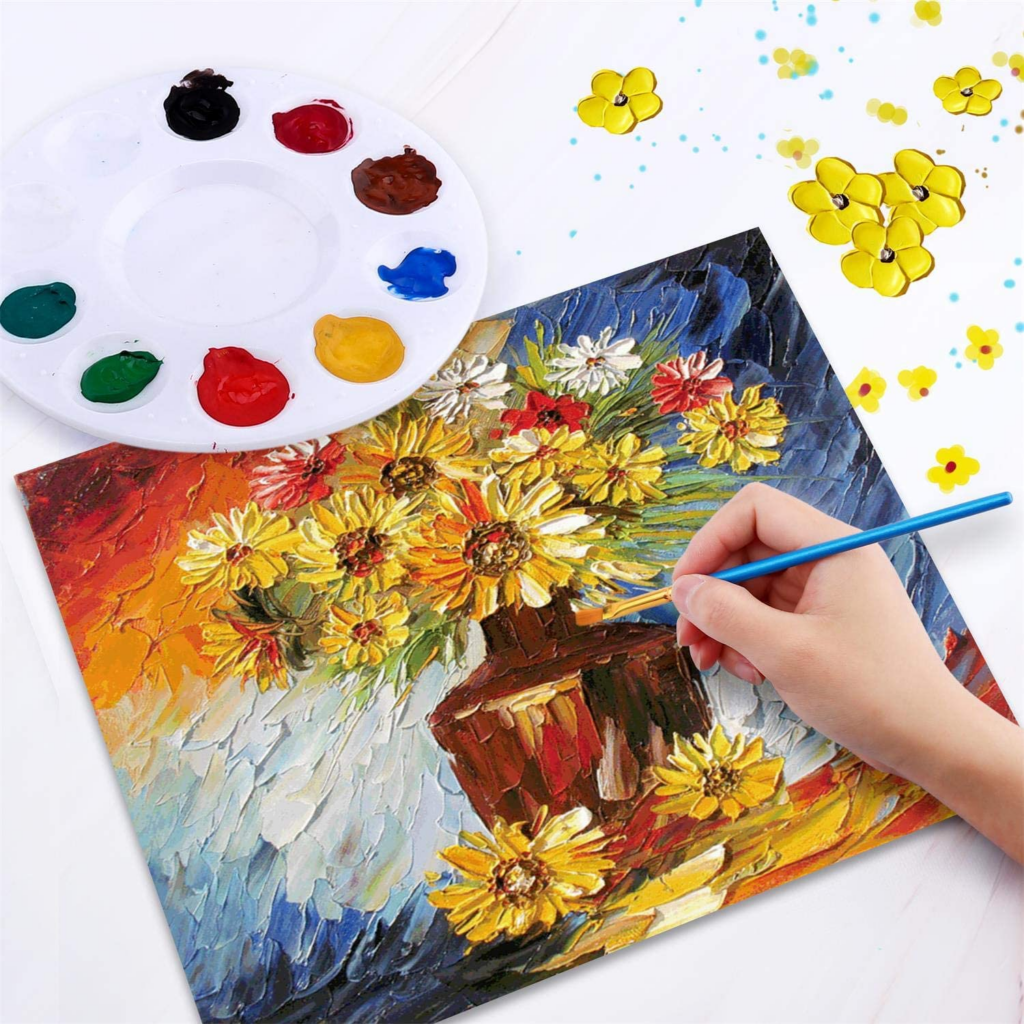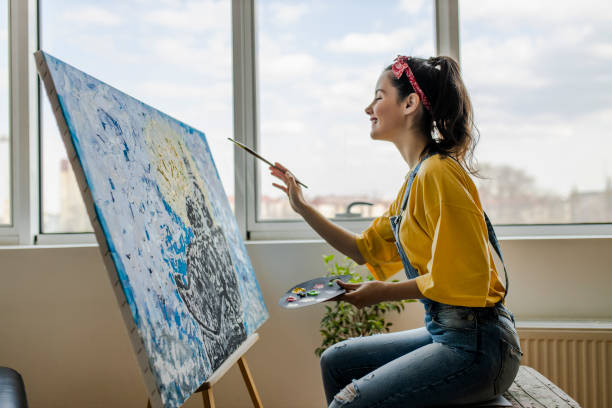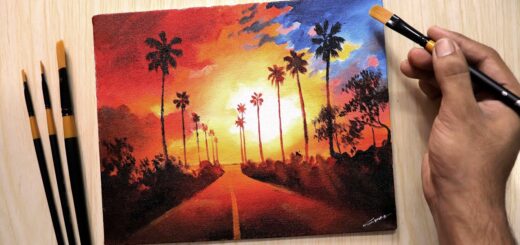Use these expert tips to guide your acrylic painting
We do have a few concrete suggestions for how to practice and explore acrylic paint, however, they are still in the early stages. Each task is brief, but it will help you build your confidence and talents as you go through the program:
Exercise #1: Swatch all of your acrylic paint colors on a canvas to get a feel for how fast they dry, their opacity levels, and how they adhere to your canvas before you start painting with them.
When you are doing this, feel free to use any of the altering items Griffin described above to observe how it affects each swatch.

Exercise #2: You may also play with the consistency and opacity of the acrylic paint by varying the amount of water you use. If you find this process overwhelming, put off purchasing modification goods until later.
Exercise #3: Create a linear gradient from black to white, as well as a gradient with two comparable colors — such as red to blue or yellow to green — and a gradient with two corresponding colors — such as red to blue or yellow to green. This will really assist you in getting a sense of how the different colors mix together.
Creating a rough sketch and/or conceptualizing your painting.
In addition to conceptualizing your painting before putting brush to paper, you should also sketch it out. This may be as easy as thinking about what you want to create and having a picture in your brain, or it might include spending the time to sketch out your painting with a light pencil or charcoal before you begin working on the final product.

According to Adam Schwimmer, owner and lead artist at Blank Canvas Mural Company in Greenville, South Carolina, “If you’re a ‘representational’ artist — e.g., a flower must look like a flower — then you would do a sketch or an under-drawing to aid in the composition of the painting to aid in the composition of the painting.” “Alternatively, ‘Plein air’ painting is painting straight from observation, in the manner in which you perceive it, done freehand and with no preparation.”
If you prefer sketching first, Griffin points out that many artists do it digitally as a means to prototype their ideas and experiment with different colors before beginning the painting process itself. It is not a procedure that works for everyone, but if you believe it would benefit you, go ahead and try it. You can read about Explainer: the law behind the destruction of street art by Clicking here.
Get Your Painting Supplies Out There!
You have completed the first step of creating your first acrylic paint piece, and the only thing left is to start working on it. For those of you who are still unsure about jumping in, we suggest sticking to a few hues at first, but if you’re feeling more secure, the world is your colorful oyster.
When painting with acrylic paint, there are a few common principles to bear in mind.

Move from mid-tones and light colors towards deeper hues. Using the wider mid-tone as a starting point, Webster continues by adding darker tones for depth and finishing with highlights. “By using a mid-tone, you may address structure and form, while the deeper tones provide depth and the brighter colors will illustrate where the light falls.” Moving through the work requires you to do a delicate balancing act. drop off laundry service can help you clean your color drop paints easily, as they are very tough and cannot be removed at home.
- Initially, start with broad forms and then work your way down to smaller details. In comparison to choosing the other method, it is much simpler to go back over your bigger forms and add tiny features. While you’re working, you should be thinking about how the painting is “coming into focus.”
- Please keep in mind that acrylic paint dries really fast. Because of this, the majority of the blending should be done on your palette before it is applied to the canvas You may spritz your acrylic paint with a spray bottle to keep them damp while you work, which will give you a little more breathing room. Your understanding of acrylic application and drying will be improved by the activities in step one.
The essence of a thing is captured by a true painter, whether they are working in the abstract or painting a portrait.” In order to get more depth in your painting, Webster suggests that you “attempt to break free from the mechanics of the application and delve deeper into feelings and experiences.” “Doing so will give your work a distinct personality and will let you to experiment with acrylic paint in a more liberated and imaginative manner.”
Be quick
In addition to being water-resistant and drying rapidly, acrylic paint also has good long-term preservation potential when left alone. For paintings that you are very proud of and want to guarantee that they survive a long time, or if you want to add additional depth to them, we suggest putting an acrylic-approved varnish on the top of the painting. As a result, your painting will have a bright and sparkling appearance, as well as protection against scratches and acrylic paint flaking.
Nothing to be concerned about if your first painting does not impress you. You’ll be hard-pressed to discover a newbie who produces a work of art straight out of the gate… The fun is only getting started on your acrylic voyage, and there’s a lot more excitement in store for you ahead. According to Schwimmer, “I’m a believer in ‘go big or go home.'” When it comes to painting, no matter how big or tiny, inside or out, for pleasure or profit, “follow your heart,” as the saying goes.
Final thoughts
Come into a world of creativity, color, and uniqueness as you let your imagination run wild in a state of hues and tones, strokes and swishes, forms, and anything else that comes to mind. Acrylic paint and the almost unlimited options it provides you on your creative journey are excellent sources of inspiration. The use of acrylic paint as a creative instrument will assist you in conquering any innovative art project you undertake and will assist you in achieving stunning outcomes for bold and outstanding artworks.
